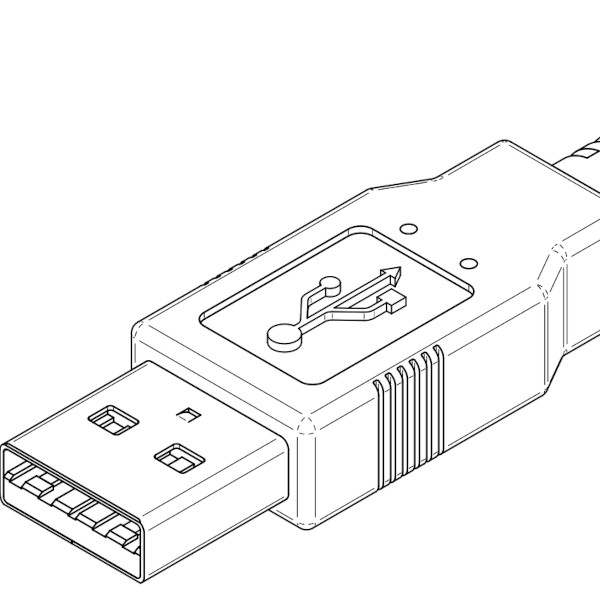How long does it take a team of rocket scientists to remove two screws? When the screws they’re working on are keeping a priceless sample of asteroid safe, it’s about three months. That’s how long NASA has been working on the OSIRIS-REx sample return canister, which came back to Earth from asteroid Bennu back in September. The container was crammed full of asteroid bits, thanks in part to an overly energetic impact between the sample-collecting boom and Bennu. There was so much stuff that planetary scientists were able to recover about 70 grams of material that was covering the outside of the sealed container; this must have been a boon to the engineers, who got to figure out how to open the jammed cover of the container without anyone breathing down their necks for samples to study. The problem was a pair of stuck fasteners out of the 35 holding the lid on the container; the solution was far more complicated than a spritz of WD-40 and a little bit of heating with an oxy-acetylene torch. Engineers had to design two “clamp-like tools” and test them on a mock-up to make sure they wouldn’t contaminate the sample. We’d love to know more about these tools; trust us, we’ll be looking into this closely. If we find anything, a full article will be forthcoming.
NASA Adjusts Course On Journey To The Moon
It’s already been more than fifty years since a human last stepped foot on another celestial body, and now that NASA has officially pushed back key elements of their Artemis program, we’re going to be waiting a bit longer before it happens again. What’s a few years compared to half a century?
 The January 9th press conference was billed as a way for NASA Administrator Bill Nelson and other high-ranking officials within the space agency to give the public an update on Artemis. But those who’ve been following the program had already guessed it would end up being the official concession that NASA simply wasn’t ready to send astronauts out for a lunar flyby this year as initially planned. Pushing back this second phase of the Artemis program naturally means delaying the subsequent missions as well, though during the conference it was noted that the Artemis III mission was already dealing with its own technical challenges.
The January 9th press conference was billed as a way for NASA Administrator Bill Nelson and other high-ranking officials within the space agency to give the public an update on Artemis. But those who’ve been following the program had already guessed it would end up being the official concession that NASA simply wasn’t ready to send astronauts out for a lunar flyby this year as initially planned. Pushing back this second phase of the Artemis program naturally means delaying the subsequent missions as well, though during the conference it was noted that the Artemis III mission was already dealing with its own technical challenges.
More than just an acknowledgement of the Artemis delays, the press conference did include details on the specific issues that were holding up the program. In addition several team members were able to share information about the systems and components they’re responsible for, including insight into the hardware that’s already complete and what still needs more development time. Finally, the public was given an update on what NASA’s plans look like after landing on the Moon during the Artemis III mission, including their plans for constructing and utilizing the Lunar Gateway station.
With the understanding that even these latest plans are subject to potential changes or delays over the coming years, let’s take a look at the revised Artemis timeline.
Continue reading “NASA Adjusts Course On Journey To The Moon”
A Deep Dive Into Quadcopter Controls
In the old days, building a quadcopter or drone required a lot of hacking together of various components from the motors to the batteries and even the control software. Not so much anymore, with quadcopters of all sizes ready to go literally out-of-the-box. While this has resulted in a number of knock-on effects such as FAA regulations for drone pilots, it’s also let us disconnect a little bit from the more interesting control systems these unique aircraft have. A group at Cornell wanted to take a closer look into the control systems for drones and built this one-dimensional quadcopter to experiment with.
The drone is only capable of flying in one dimension to allow the project to more easily fit into the four-week schedule of the class, so it’s restricted to travel along a vertical rod (which also improves the safety of the lab). The drone knows its current position using an on-board IMU and can be commanded to move to a different position, but it first has to calculate the movements it needs to make as well as making use of a PID control system to make its movements as smooth as possible. The movements are translated into commands to the individual propellers which get their power from a circuit designed from scratch for this build.
All of the components of the project were built specifically for this drone, including the drone platform itself which was 3D printed to hold the microcontroller, motors, and accommodate the rod that allows it to travel up and down. There were some challenges such as having to move the microcontroller off of the platform and boosting the current-handling capacity of the power supply to the motors. Controlling quadcopters, even in just one dimension, is a complex topic when building everything from the ground up, but this guide goes some more of the details of PID controllers and how they help quadcopters maintain their position.
China’s Nuclear-Powered Containership: A Fluke Or The Future Of Shipping?
Since China State Shipbuilding Corporation (CSSC) unveiled its KUN-24AP containership at the Marintec China Expo in Shanghai in early December of 2023, the internet has been abuzz about it. Not just because it’s the world’s largest container ship at a massive 24,000 TEU, but primarily because of the power source that will power this behemoth: a molten salt reactor of Chinese design that is said to use a thorium fuel cycle. Not only would this provide the immense amount of electrical power needed to propel the ship, it would eliminate harmful emissions and allow the ship to travel much faster than other containerships.
Meanwhile the Norwegian classification society, DNV, has already issued an approval-in-principle to CSSC Jiangnan Shipbuilding shipyard, which would be a clear sign that we may see the first of this kind of ship being launched. Although the shipping industry is currently struggling with falling demand and too many conventionally-powered ships that it had built when demand surged in 2020, this kind of new container ship might be just the game changer it needs to meet today’s economic reality.
That said, although a lot about the KUN-24AP is not public information, we can glean some information about the molten salt reactor design that will be used, along with how this fits into the whole picture of nuclear marine propulsion.
Continue reading “China’s Nuclear-Powered Containership: A Fluke Or The Future Of Shipping?”
Australia Bans Engineered Stone, Workers Elsewhere Demand The Same
Engineered stone, also known as artificial stone or composite stone, has become a popular material in the construction and design industries due to its aesthetic appeal and durability. It’s become the go-to solution for benchtops in particular, with modern kitchens and bathrooms heavily featuring engineered stone in this way.
However, this seemingly innocuous material harbors a dark side, posing significant health risks to workers involved in its manufacturing and installation. The hazards associated with engineered stone have gone unnoticed for some time, but the toll is adding up, and calls for action grow louder. Let’s examine why engineered stone is so harmful, and explore the measures being taken across the world to curtail or even ban its use.
Continue reading “Australia Bans Engineered Stone, Workers Elsewhere Demand The Same”
Parachute Drops Are Still A Viable Solution For Data Recovery From High Altitude Missions
Once upon a time, when the earliest spy satellites were developed, there wasn’t an easy way to send high-quality image data over the air. The satellites would capture images on film and dump out cartridges back to earth with parachutes that would be recovered by military planes.
It all sounds so archaic, so Rube Goldberg, so 1957. And yet, it’s still a viable method for recovering big globs of data from high altitude missions today. Really, you ask? Oh, yes indeed—why, NASA’s gotten back into the habit just recently!
Hacker Tactic: Internal ESD Diode Probing
Humans are walking high voltage generators, due to all the friction with our surroundings, wide variety of synthetic clothes, and the overall ever-present static charges. Our electronics are sensitive to electrostatic discharge (ESD), and often they’re sensitive in a way most infuriating – causing spurious errors and lockups. Is there a wacky error in your design that will repeat in the next batch, or did you just accidentally zap a GPIO? You wouldn’t know until you meticulously check the design, or maybe it’s possible for you to grab another board.
 Thankfully, in modern-day Western climates and with modern tech, you are not likely to encounter ESD-caused problems, but they were way more prominent back in the day. For instance, older hackers will have stories of how FETs were more sensitive, and touching the gate pin mindlessly could kill the FET you’re working with. Now, we’ve fixed this problem, in large part because we have added ESD-protective diodes inside the active components most affected.
Thankfully, in modern-day Western climates and with modern tech, you are not likely to encounter ESD-caused problems, but they were way more prominent back in the day. For instance, older hackers will have stories of how FETs were more sensitive, and touching the gate pin mindlessly could kill the FET you’re working with. Now, we’ve fixed this problem, in large part because we have added ESD-protective diodes inside the active components most affected.
These diodes don’t just help against ESD – they’re a general safety measure for protecting IC and transistor pins, and they also might help avoid damaging IC pins if you mix. They also might lead to funny and unexpected results, like parts of your circuit powering when you don’t expect them to! However, there’s an awesome thing that not that many hackers know — they let you debug and repair your circuits in a way you might not have imagined.
Continue reading “Hacker Tactic: Internal ESD Diode Probing”


















